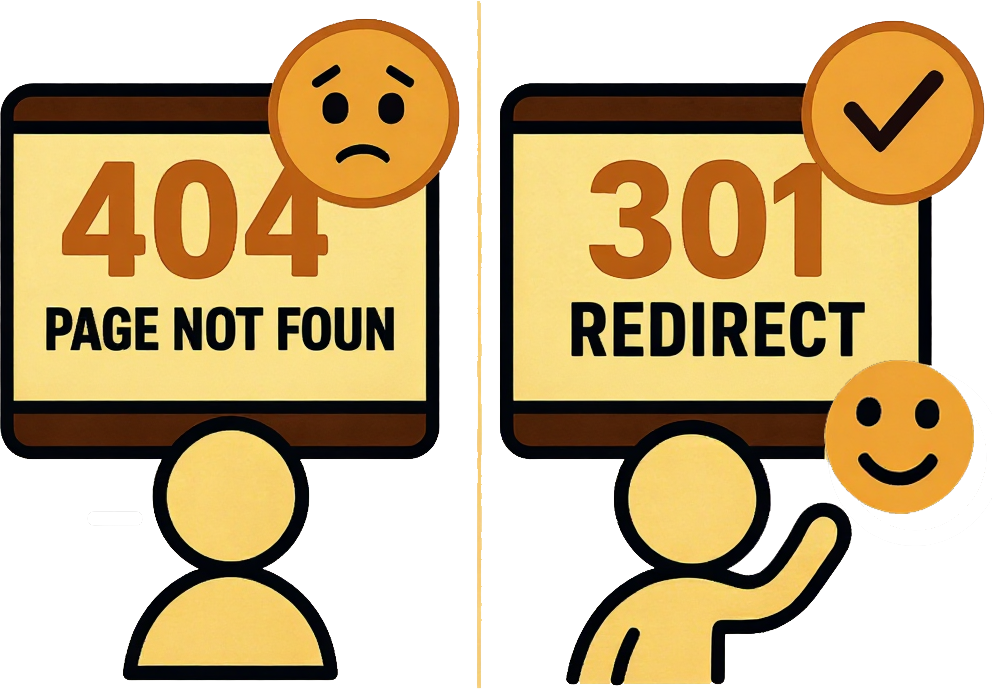301 Redirect
 A 301 redirect is a HTTP status code that indicates that a page or resource has been permanently moved to another location. When a webpage or resource that has a 301 redirect set up is requested (such as a user loading a page in a browser, or a search engine crawler loading a URL) the requestor is automatically redirected to the specified URL.
A 301 redirect is a HTTP status code that indicates that a page or resource has been permanently moved to another location. When a webpage or resource that has a 301 redirect set up is requested (such as a user loading a page in a browser, or a search engine crawler loading a URL) the requestor is automatically redirected to the specified URL.
When You Should Use a 301 Redirect
- Permanent Changes
When the domain name of a website needs to be updated, or URL structure of a website is changed (e.g. website redesign, doing something like moving all blog posts underneath the base URL '/blog/').
- Deleting Pages
When pages need to be removed, ensure users visiting the deleted pages do not encounter a 404 error.
- URL Consolidation
Combine multiple pages into a single page to streamline.
Why are 301 Redirects Important
 The two most vital reasons for using a 301 redirect are to enhance SEO and improve user experience, both of which are critical factors in determining the quality of a website.
The two most vital reasons for using a 301 redirect are to enhance SEO and improve user experience, both of which are critical factors in determining the quality of a website.
- Enhance SEO
Search engines identify websites by their URLs. If you directly replace a new URL for page or resource without setting up a redirect, the SEO value associated with the previous URL will be lost. Search engines will treat the new URL as an entirely different page, which means it will take considerable time for them to crawl, index, and understand the content of your website again, leading to a decline in traffic and potentially missing valuable opportunities.
- User Experience
 Imagine a scenario where a user is browsing your site to learn more about the company's products or services. They click on a link but are directed to a "404 Page" (indicating the content no longer exists) because the website content was updated, but a 301 redirect was not set up. This severely impacts the user experience and could directly result in the company losing business opportunities.
Imagine a scenario where a user is browsing your site to learn more about the company's products or services. They click on a link but are directed to a "404 Page" (indicating the content no longer exists) because the website content was updated, but a 301 redirect was not set up. This severely impacts the user experience and could directly result in the company losing business opportunities.
Correctly implementing 301 redirects is essential for maintaining and improving the quality of a website, as it helps protect your site’s traffic while enhancing user satisfaction and creating business opportunities.
301 Redirect Best Practices
- Ensure that every time a redirect is configured, checks are performed for any redirect loops, as these can cause pages to fail to display properly and prevent search engines from crawling the website’s content.
- Make sure that pages already set to 301 redirect are removed from the sitemap. Keeping the sitemap up to date and ensuring it has a correct structure can enhance SEO.
- While setting a 301 redirect for a URL, old internal links should also be updated to avoid displaying dead pages to users.
Want to work with us?
Speak to one of our digital marketing specialists and we can design an online marketing growth plan for you.
